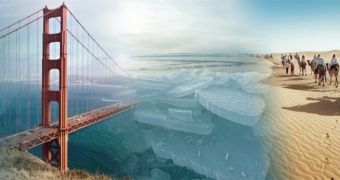A few days ago, the Stockholm Arlanda Airport in Sweden cut the ribbon on an innovative system designed to let people experience desert heat, Arctic chill and all other weather conditions in between simply by stepping inside carefully engineered chambers that either rev up or lower temperatures, and even mimic windy conditions.
The system, dubbed the Climate Portal, was installed at Sweden's Stockholm Arlanda Airport to let passengers experience first-hand the weather in the city or region of their destination.
The Portal promises a complete experience
Apart from altering temperatures and air current movements to replicate weather conditions in one corner of the globe or another, the three chambers that make up the Climate Portal come complete with sound and light machines that help create an even more accurate picture of what Mother Nature is up to in cities across the world at any given moment.
“You enter three rooms - HOT, COLD and BIG - and feel the heat of the world’s deserts, the pulse of its big cities or the wintery chill and biting winds,” airport officials explain.
“The rooms are connected to online weather services whose data are transformed into a physical experience for you on the premises - all using the latest sound and image technology as well as wind and temperature simulations,” they go on to detail.
Currently, the Climate Portal is installed in the Stockholm Arlanda Airport's Terminal 5. It will remain operational and available for public use for a few more weeks, until August 31.
The innovative installation isn't just for fun
Admittedly, being able to experience weather conditions across the globe without having to actually board a plane and travel to those destinations sounds like a whole lot of fun.
Still, it wasn't (solely) for people's entertainment that the folks running Sweden's Stockholm Arlanda Airport decided to set up the Climate Portal. Rather, they thought it might come in handy to passengers clueless about which clothes to pack and which to leave behind.
Thus, the goal was to let people experience the weather of their destination before reaching it and help them have an easier time choosing the best wardrobe for their journey.

 14 DAY TRIAL //
14 DAY TRIAL // 